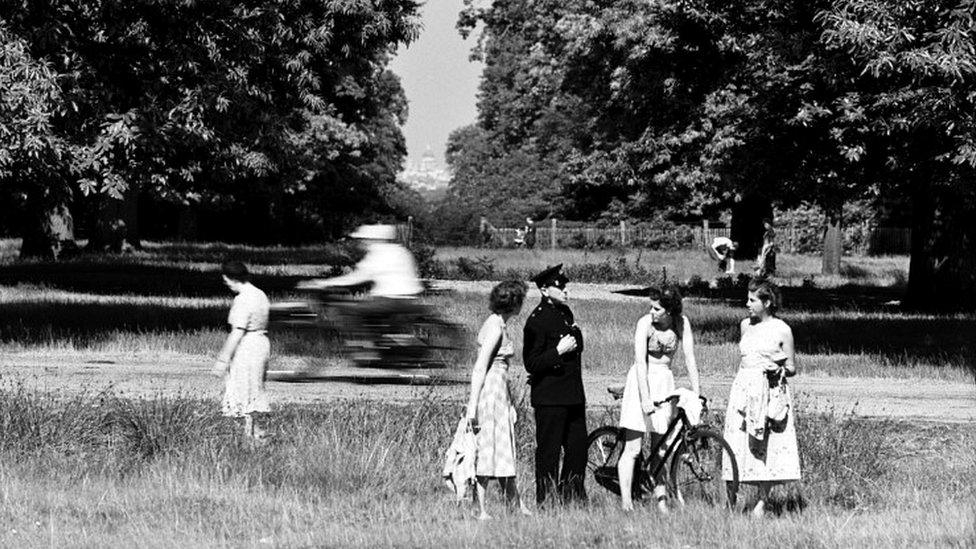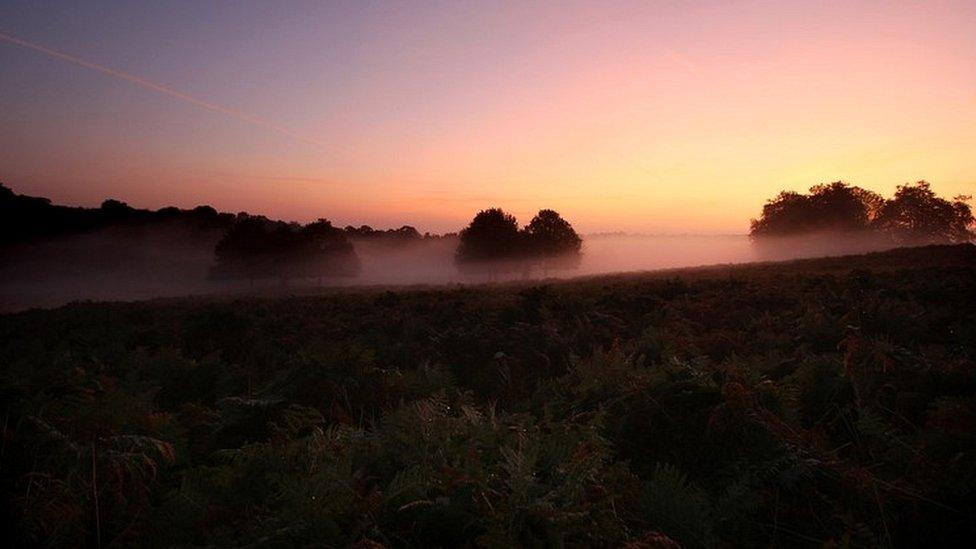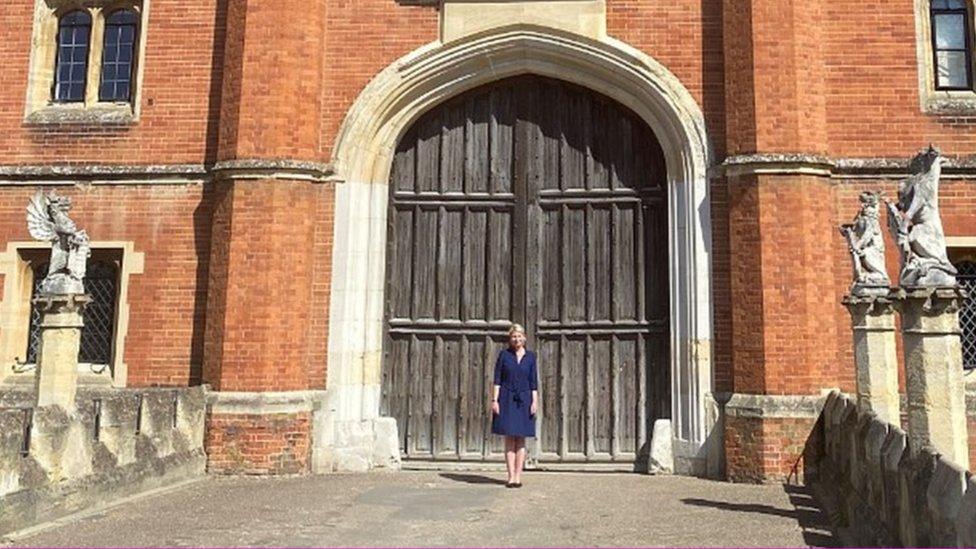King Henry VIII's Mound protected as scheduled monument
- Published

The legend that Henry VIII stood on the mound waiting for a signal is now considered to be untrue
A mound linked in legend to where Henry VIII waited for a signal to show Anne Boleyn had been executed has been protected as a scheduled monument.
King Henry VIII's Mound, in Richmond Park, south-west London, is believed to have been an ancient funerary monument dating from the Bronze Age.
It was later used to oversee royal hunts and is now a viewing platform.
Historic England described the mound as a "rare feature of London's prehistoric landscape".
The mound is circular with a flat top and is thought to be an ancient round barrow funerary monument from around 2400 to 1500 BC, which was used to cover over burials.

The mound in Richmond Park has become a viewing platform, offering protected views of St Paul's Cathedral (as seen here in 1952)
It gained its name from a legend that King Henry VIII waited at the spot on 19 May 1536 for a signal from the Tower of London that his second wife had been executed, meaning he could then marry Lady Jane Seymour.
While many now consider the story to be untrue, the site was recorded as "Kings Standinge" on a map of 1630 when it would have been used as a platform to watch royal hunts take place in Richmond Park, with both Henry VIII and Elizabeth I known to have hunted there.
These days, the summit provides protected views of St Paul's Cathedral, while Windsor Castle can also be seen from the mound.

Richmond was given its name by Henry VII who named it after his earldom in Yorkshire
Another mound in the park, which is thought to be a long barrow used as a funerary monument during the Early and Middle Neolithic periods (3800-2400 BC) has also been given protection.
Historic England said the sites had "national archaeological and historic importance" which could improve understanding of "Bronze Age mortuary practices" and "post-medieval standings".
Chief executive Duncan Wilson said King Henry VIII's Mound "has clearly been a special place for thousands of years" and "merits the protection being conferred on it today".
- Published24 May 2020

- Published12 December 2018

- Published21 December 2017
